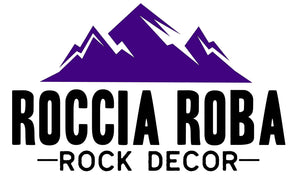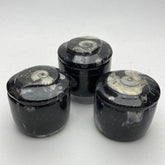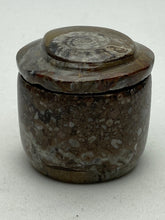Orthoceras: Fossil Treasures from the Atlas Mountains of Morocco
In the heart of the Atlas Mountains of Morocco lies a treasure trove of ancient marine life, preserved for millions of years in the form of striking black-and-white fossils known as Orthoceras. These creatures, belonging to the class Cephalopoda, once roamed the seas during the Ordovician period, around 488 to 443 million years ago. Today, their fossilized remains offer a glimpse into the distant past, captivating scientists, collectors, and enthusiasts alike.
The name “Orthoceras” is derived from the Greek words "ortho" meaning straight, and "keras" meaning horn is an apt description for the elongated, cone-shaped shells that define these ancient cephalopods. Their sleek, streamlined bodies enabled them to navigate the ocean depths with ease, propelled by jet-like movements generated by water-filled chambers within their shells. These chambers provided buoyancy and regulated their depth, allowing them to rise and descend through the water column in search of prey.

By Nobu Tamura (http://spinops.blogspot.com) - Own work, CC BY 3.0, https://commons.wikimedia.org/w/index.php?curid=19460217
Today’s Atlas Mountains of Morocco serve as a geological window into the ancient marine ecosystems that thrived in the oceans that once covered much of the Earth's surface. Here, the fossil-rich sedimentary rocks, particularly those of the Anti-Atlas and High Atlas regions, harbor an abundance of Orthoceras specimens, preserved over eons.
The process of fossilization begins with the rapid burial of deceased organisms in sedimentary layers, preventing decay and providing an ideal environment for mineral replacement. Over time, minerals such as calcite, silica, and pyrite infiltrate the organic structures of the organisms, gradually transforming them into stone.
One of the most striking aspects of Orthoceras fossils is their detailed preservation and aesthetic appeal. The contrast between the creamy-white fossilized shell and the jet-black matrix in which they are often found creates a visually stunning display. This natural beauty has made Orthoceras fossils highly sought after by collectors and artisans, who transform them into a variety of ornamental objects, from polished specimens to rock candles to unique gift boxes.
Beyond their visual allure, Orthoceras fossils offer invaluable insights into the evolutionary history and paleobiology of ancient cephalopods. By studying their anatomical features and ecological adaptations, scientists can reconstruct the lifestyles and behaviors of these creatures, shedding light on their role in past marine ecosystems.
In conclusion, the Orthoceras fossils found in the Atlas Mountains of Morocco are not merely geological curiosities; they are windows into the distant past, portals through which we can glimpse the wonders of ancient marine life. From their elegant spiral shells to their intricate patterns of growth, these fossils encapsulate the beauty and complexity of evolution, inspiring wonder and fascination in all who encounter them.






